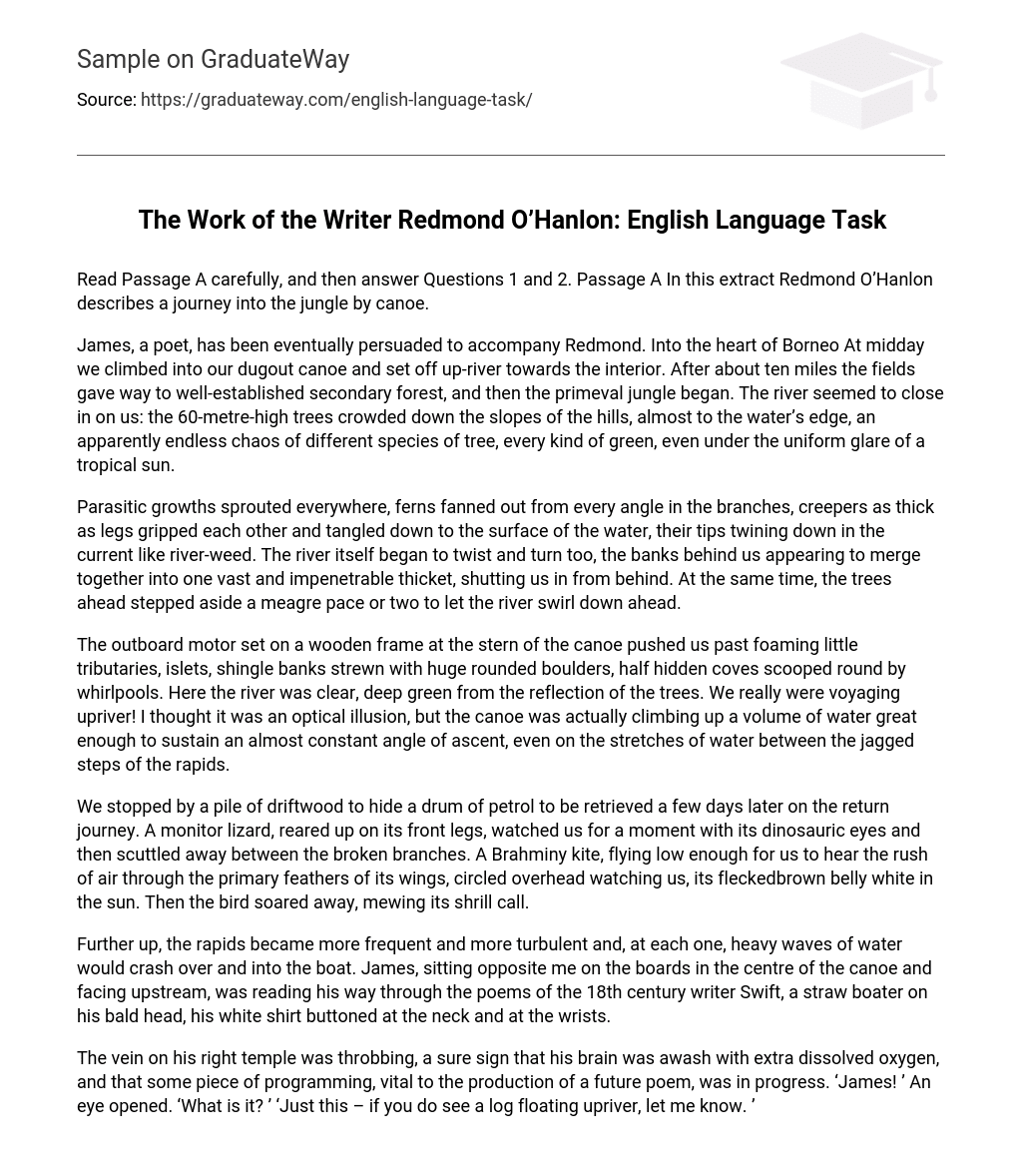Passage A describes a canoe journey into the jungle, as recounted by Redmond O’Hanlon.
James, a poet, reluctantly agreed to join Redmond on their expedition to the heart of Borneo. At noon, we embarked on our journey up-river in a dugout canoe. After approximately ten miles, the cultivated fields transformed into a mature secondary forest, and beyond that, the original untouched jungle awaited. The river appeared to narrow as we progressed, with tall trees reaching up to 60 meters lining the hillsides and almost touching the water’s edge. They formed a seemingly infinite and jumbled collection of various tree species, displaying an array of vibrant greens even under the intense tropical sunlight.
Parasitic growths spread throughout, with ferns extending in all directions from the branches. Thick creepers entwined and hung down to the water’s surface, resembling river-weed as they swayed in the current. The river also began to curve and bend, while the banks behind us seemed to blend together into an impassable thicket, enclosing us from the rear. Simultaneously, the trees ahead moved aside slightly to make way for the advancing river.
On a wooden frame at the stern of the canoe, the outboard motor propelled us past various features of the river. These included foaming tributaries, islets, shingle banks with large rounded boulders, and coves hidden by whirlpools. The river appeared clear and had a deep green hue, thanks to the reflection of trees. It seemed like an optical illusion, but the canoe was truly ascending a significant amount of water, allowing for a consistent upward angle even in the stretches between the rapids’ jagged steps.
We hid a drum of petrol in a pile of driftwood, planning to retrieve it on our return journey. As we stopped, a monitor lizard stood up on its front legs and watched us with its dinosauric eyes. Then it quickly moved away between the broken branches. Overhead, a Brahminy kite circled low enough for us to hear the rush of air through its wing feathers. Its belly, flecked with brown, appeared white in the sun. After a while, the bird mewed its shrill call and soared away.
As we moved higher up the river, the rapids increased in frequency and intensity. Each rapid would send powerful waves crashing over the boat. James, who was sitting across from me in the middle of the canoe and facing upstream, was immersed in reading the poems of 18th-century writer Swift. He wore a straw boater on his bald head and had his white shirt buttoned up at the neck and wrists.
The vein on his right temple was pulsating, indicating that his brain was filled with an excess of dissolved oxygen, and that an essential element of a future poem was being created. ‘James!’ An eye opened. ‘What is it?’ ‘Just this – if you happen to spot a floating log traveling upriver, please inform me.’ ‘Crocodiles?’ ‘Well, not the one that attacks you. Not here. However, according to an old book I read, we may come across the freshwater species. The one that measures four-and-a-half meters with a one-and-a-half-meter long snout and numerous teeth.’ ‘Honestly, Redmond,’ James responded, rising on his elbow and scanning the surroundings, ‘you’re ridiculous!’





